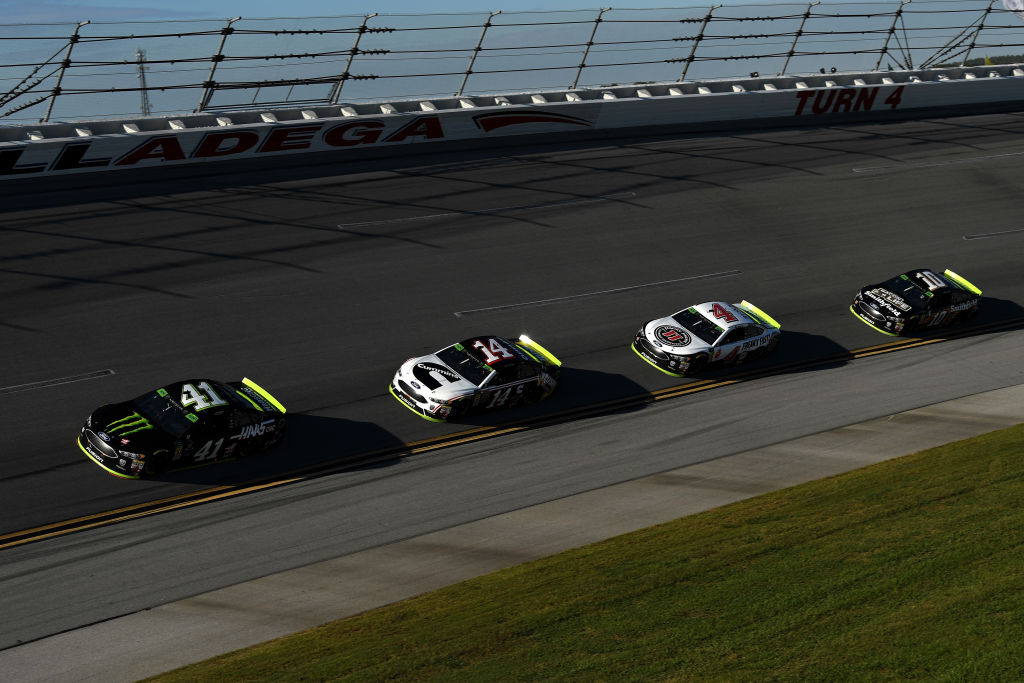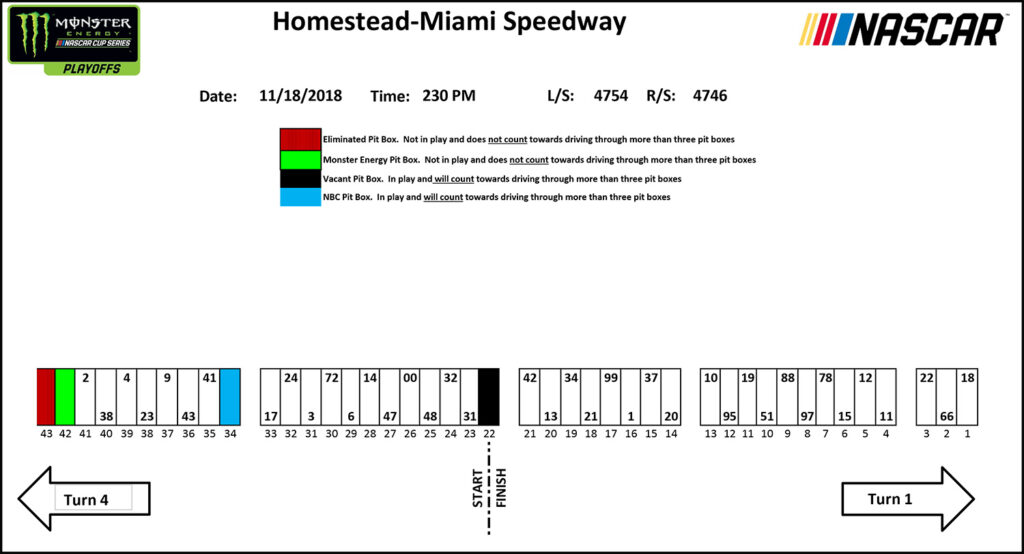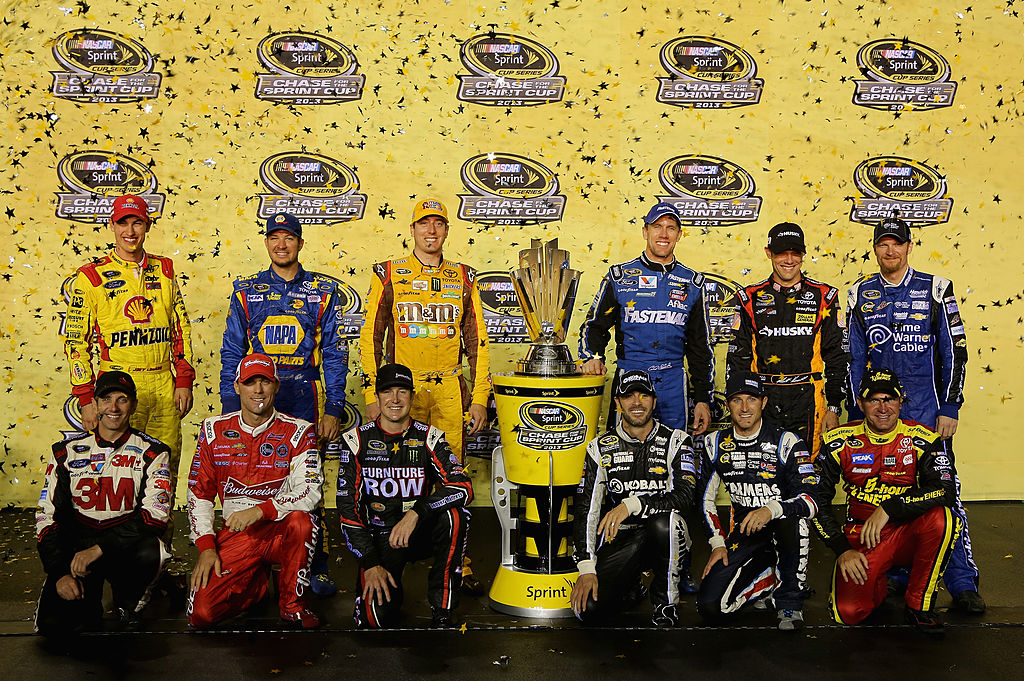During the Coke Zero Sugar 400 at Daytona International Speedway, Parker Retzlaff, driver of the No. 62 Beard Motorsports Chevrolet, pushed Ford driver Harrison Burton past fellow Chevy driver Kyle Busch on the last lap, resulting in Burton scoring the win. There was controversy surrounding this move, with some arguing that Retzlaff should have pushed Busch instead of Burton because they were both Chevy drivers. Retzlaff said he was going for the win and pushing Burton was the best chance to do so before he eventually finished seventh.
Fans have criticized the backlash Retzlaff has received for his move at the end of the race. They say that team orders should not exist in the sport, and drivers and teams should focus on themselves and not their teammates. However, team orders are nothing new to motorsport; just look at Formula 1, for example. It even has a place in NASCAR and is still used to this day. Let’s take a look and dive into team orders in NASCAR.
The most well-known form of team orders in NASCAR is in superspeedway racing. During a race, drivers will line up with their manufacturers to work together to get up to the front. This is why lines will comprise solely of Chevys, Fords, and Toyotas during the race. This goes for restarts as well. During the choose rule, teams will work together with their manufacturer throughout the run. In 2018, Stewart-Haas Racing (SHR) had all four cars working together to make up the top four spots. Eventually, SHR driver Aric Almirola went on to win the race.

Teams working solely within their organization are nothing new. In the early 2000s, Dale Earnhardt. Inc. (DEI) perfected this technique. Throughout each superspeedway (at the time plate race), the duo of Dale Earnhardt Jr. and Michael Waltrip would work together and control the front of the pack all race long. From 2001-2004, DEI won 11 out of 18 plate races (seven from Dale Jr., four from Michael Waltrip). It’s an effective strategy that, if done well, can result in many wins for the team or manufacturer. The 11 wins are listed down below.
| Driver | Wins | Track | Years |
| Dale Jr. | 7 | Daytona (2x), Talladega (5x) | 2001: Daytona II, Talladega II 2002: Talladega Sweep 2003: Talladega I 2004: Daytona 500, Talladega II |
| Michael Waltrip | 4 | Daytona (3x), Talladega (1x) | 2001: Daytona 500 2002: Daytona II 2003: Daytona 500, Talladega II |
Sometimes, the team doesn’t order their drivers to help each other. In many instances, it’s the driver who decides to lend a helping hand to benefit one or multiple teammates. The best example of this is when the leader comes to their teammate to put them a lap down, they choose not to do so and keep them on the lead lap. This is prevalent at the end of a stage, so the driver can stay on the lead lap and not have to fight for the lucky dog spot.
Speaking of lapped cars, if their teammate is in second trying to chase the leader down, they will hold the leader up in an effort to help their teammate. In 2021, during the Quaker State 400 at Atlanta Motor Speedway, Ross Chastain, who drove for Chip Ganassi Racing, held up leader Kyle Busch to help his teammate Kurt Busch get by him for the lead. Kurt went on to win the race, while Kyle finished second.
This next example is an obscure one, but it has massive implications. During the 2018 championship race at Homestead-Miami Speedway, Joe Gibbs Racing (JGR) driver Denny Hamlin won the pole, with his teammate Kyle Busch, who was in the Championship 4 that season, qualifying second. During pit stall selections, the No. 11 team gave the No. 1 pit stall to the No. 18 team to give them a better advantage during pit stops. Hamlin, who was not in the Championship 4, took the No. 4 pit stall.

Joe Gibbs, owner of JGR, explained the decision to swap the pit stalls for the No. 11 and No. 18,
“So we all kind of got together as a team and so what came out of those meetings was this: What we want for Denny is to win this race, OK? So that’s important for him. That’s a big deal for us and our sponsor. And then of course the other side of that for our team, we all want to win a championship. So we all kind of … we meet, we talk all that over and it’s everybody making a team decision and so we felt like the best thing for us, we want Denny focused on winning this race. He thinks he can do it, and we think he can do it from that pit box, and at the same time, we want to make a team decision, we’d like to win a championship for Joe Gibbs Racing and so that’s part of the complication, the intriguing part of this, but it’s a part of our sport.”
Joe Gibbs
That is what team orders are about. They result in one or multiple drivers sacrificing their position to benefit their teammates for one reason or another. In this case, it was to help Busch win the 2018 championship. While most team orders are harmless in the grand scheme of things, this next and final example shows when they go to the extreme and change the outcome of not just a race but a whole season.
If any controversy brought out the worst of team orders, look no further than “Spingate.” During the 2013 Cup Series regular-season finale at Richmond Raceway, Martin Truex Jr., who drove for Michael Waltrip Racing (MWR) then, was trying to make the 12-man Chase for the Sprint Cup (the playoffs). The team tried to help Truex by manipulating the race. First, teammate Clint Bowyer spun out to bring out a caution late in the race. Second, Truex’s second teammate, Brian Vickers, was told to pit during the restart to give Truex additional points to leapfrog SHR driver Ryan Newman into the Chase. The plan initially worked; MTJ was in the Chase, and Newman was out.

When NASCAR looked into the incident, they found that the team manipulated the race with their team orders and penalized MWR with, at the time, the largest penalties in NASCAR history. Along with the fines and suspensions, each team was docked 50 driver and owner points, knocking Truex out of the Chase and putting Newman back in. The after-effects resulted in NAPA Auto Parts, Truex’s sponsor, leaving MWR at season’s end, MTJ losing his ride, and the team shutting down at the end of the 2015 season. All that, from team orders to help their driver get into the Chase.
While it’s not publicized like other motorsports, team orders exist in NASCAR. From the simple push your teammate to race manipulation, it has been around the sport for years and will continue to for the foreseeable future. What do you think about all this? Let us know on Discord or X what your take is, and don’t forget you can also follow us on Instagram, Facebook, and YouTube.
